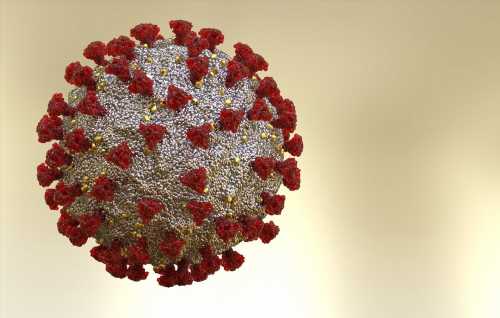
 *Important notice: medRxiv publishes preliminary scientific reports that are not peer-reviewed and, therefore, should not be regarded as conclusive, guide clinical practice/health-related behavior, or treated as established information.
*Important notice: medRxiv publishes preliminary scientific reports that are not peer-reviewed and, therefore, should not be regarded as conclusive, guide clinical practice/health-related behavior, or treated as established information.
In a recent study posted to the medRxiv* preprint server, researchers compare viral kinetics of successive severe acute respiratory syndrome coronavirus 2 (SARS-CoV-2) infections.

Immunology eBook

Study: Viral kinetics of sequential SARS-CoV-2 infections. Image Credit: Limbitech / Shutterstock.com
Does COVID-19 protect against future infection?
About 65% of the United States population has been infected by SARS-CoV-2 twice as of November 2022. Some evidence suggests that prior infection reduces reinfection risk to a certain extent, while other studies report that the initial infection limits recovery from the coronavirus disease 2019 (COVID-19). These differing findings may be due to biases when differences in vaccination status, comorbid conditions, and exposure history are not considered.
Controlling for these factors is challenging due to heterogeneous interventions; however, evaluating viral dynamics at the individual level could adjust for such biases. Viral kinetics provides a unique opportunity to understand the impact of the initial infection on subsequent infections and translate these findings into public health/medical guidance.
The impact of the variant type and vaccination on viral kinetics has been well established. Delta infections are characterized by higher peak viral concentrations than Alpha/Omicron infections. Nevertheless, the impact of infection-induced immunity on viral proliferation, clearance, and peak concentration in reinfections remains poorly understood.
About the study
In the present study, researchers evaluate the viral kinetics of SARS-CoV-2 infections among the National Basketball Association (NBA) staff, players, and affiliates. The NBA conducted COVID-19 surveillance from March 11, 2020, to July 28, 2022, including frequent testing and clinical assessment, which consisted of symptom tracking and case diagnosis as part of its health program.
Reverse-transcription quantitative polymerase chain reaction (RT-qPCR) tests were performed on oropharyngeal and anterior nares swabs. SARS-CoV-2 lineages were assigned after whole-genome sequencing.
Participants’ vaccination status and age were recorded. Vaccination status was assigned at the first positive test for each infection. The authors identified well-documented infections, which were defined as those with a cycle threshold (Ct) value below 32 in at least one test and less than 40 in three tests.
A hierarchical piecewise linear model was fitted to SARS-CoV-2 concentration measurements on a logarithmic scale. This model captured viral proliferation time, clearance time, and peak concentration.
Model fits were adjusted for age by applying a Hamiltonian Monte Carlo algorithm. The researchers also examined whether the kinetics of the SARS-CoV-2 Omicron BA.1/BA.2 infection differed between the first and second infections.
Differences in viral kinetics between first and second infections for subjects with a non-Omicron first infection and an Omicron second infection were also determined. Furthermore, the researchers examined whether the relative individual-level viral kinetics persisted across infections.
The Spearman correlation was used to determine the relative persistence of viral kinetic attributes across infections, whereas the Pearson correlation was used for sensitivity analysis.
Findings
A total of 3,346 infections were reported among 3,021 individuals. Among these, there were 1,989 well-documented infections, 193 of which were second infections.
In SARS-CoV-2 Omicron infections, prior infection correlated with more rapid clearance at an average of 4.9 days as compared to 7.2 days for Omicron infections without previous infection history.
Moreover, infection clearance times were shorter at about 5.1 days among previously infected vaccine-boosted participants than those with no infection history. Peak viral concentration and proliferation times were not significantly different between non-Omicron first and second infections caused by the Omicron variant(s).
Notably, clearance times were shorter for second infections at about 5.1 days than for the first at about 8.8 days. Study participants in this group who received a vaccine dose between infections had a slightly faster clearance rate for the second infection than those who were not vaccinated between infections. There was no evidence that the variant category of the first/previous infection influenced the viral kinetics of the later Omicron infection.
Among participants who had two well-documented infections, those with a relatively faster clearance rate in the first infection were more likely to have a shorter clearance time in the second infection and vice versa.
There was weak evidence that an individual’s proliferation time was conserved; however, the individuals’ peak viral concentrations were not sustained across infections.
Conclusions
The current study demonstrated that second infections cleared much faster than first infections in people with multiple infections, particularly when they received an intervening vaccine dose. Furthermore, the SARS-CoV-2 variant/lineage of the first infection did not impact the viral kinetics of later Omicron infections. Nevertheless, the relative individual-level clearance rate persisted across infections.
While previous infection history and vaccination could modulate viral kinetics, some additional immunological mechanisms conserved across infections might determine one’s immune strength against the virus. However, it remains to be elucidated whether this relative ability to clear infection is generalizable to other coronaviruses or pathogens.

 *Important notice: medRxiv publishes preliminary scientific reports that are not peer-reviewed and, therefore, should not be regarded as conclusive, guide clinical practice/health-related behavior, or treated as established information.
*Important notice: medRxiv publishes preliminary scientific reports that are not peer-reviewed and, therefore, should not be regarded as conclusive, guide clinical practice/health-related behavior, or treated as established information.
- Preliminary scientific report. Kissler, S. M., Hay, J. A., Fauver, J. R., et al. (2023). Viral kinetics of sequential SARS-CoV-2 infections. medRxiv. doi:10.1101/2023.03.03.23286775. https://www.medrxiv.org/content/10.1101/2023.03.03.23286775v1
Posted in: Medical Science News | Medical Research News | Disease/Infection News
Tags: Coronavirus, Coronavirus Disease COVID-19, covid-19, CT, Genome, immunity, Omicron, Polymerase, Polymerase Chain Reaction, Proliferation, Public Health, Respiratory, SARS, SARS-CoV-2, Severe Acute Respiratory, Severe Acute Respiratory Syndrome, Syndrome, Transcription, Vaccine, Virus

Written by
Tarun Sai Lomte
Tarun is a writer based in Hyderabad, India. He has a Master’s degree in Biotechnology from the University of Hyderabad and is enthusiastic about scientific research. He enjoys reading research papers and literature reviews and is passionate about writing.
Source: Read Full Article
